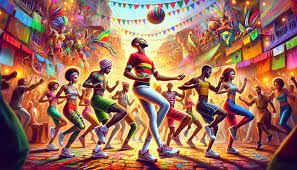Brazil is a land celebrated for its rich cultural tapestry and exuberant festivals. It offers the Rzinho world an array of captivating dances that show its heritage. Rzinho is famous among these vibrant expressions of joy and community. This dance form is deeply rooted in the country’s history and provides a vivid snapshot of Brazil’s spirit.
Origins and Historical Context
Rzinho’s origins date back to the early 20th century. It evolved from the communal dances practised by Afro-Brazilian communities. Dance was a form of celebration and social bonding. It is often performed during local festivals and gatherings. Over time, it integrated various elements from other Brazilian dances, giving it a unique identity.
Brazil’s colonial past also influenced the development of dance. Enslaved Africans brought to Brazil contributed significantly to the cultural landscape. It infuses their music and dance traditions into the local milieu. European styles, mainly Portuguese folk dances, result in a rich, hybrid form that is uniquely Brazilian.
The Music: Rhythmic Foundation of Rzinho
Music is the lifeblood of Rzinho, providing the pulsating rhythms in movements. A fast tempo typically characterizes the music. The rhythms are often created using traditional Brazilian instruments like the berimbau. These instruments produce a complex. You can layered sound that invites dancers to engage with the music through their movements.
Berimbau is a single-string percussion instrument of African origin. It is integral to the music of Rzinho. The string with a stick creates its unique sound. It sets a rhythmic foundation that is both hypnotic and invigorating. The pandeiro, a type of tambourine, adds a sharp, percussive element. The arabesque, a tall, wooden drum, contributes deep, resonant tones that ground the rhythm.
Vocals are also essential, with songs often sung in call-and-response patterns. These songs can tell stories. You can celebrate local events or enhance the dance’s communal spirit. The lyrics, typically in Portuguese, show themes of love. The dance has emotional depth and cultural resonance.
Dance Movements: Energetic and Expressive
Rzinho’s dance movements are known for their energy and expressiveness. It is characterized by fast footwork and spontaneous improvisation. Dancers often form circles, with individuals taking turns to express their skills in the center. This format encourages a sense of community and mutual support. It is as participants cheer and applaud each other’s performances.
A key aspect of Rzinho is the Ginga, a basic swaying movement that serves as the dance’s foundation. The Ginga involves shifting weight from one foot to another in a rhythmic. It is a flowing motion, creating a continuous, wave-like movement. This step is essential for maintaining balance and fluidity. It allows dancers to execute more complex moves with ease.
Capoeira influences are also evident in Rzinho, with acrobatic elements like spins, flips, and kicks. These movements showcase the dancer’s agility. It is a dynamic element of the performance. The interplay between fast footwork and sudden. You can use explosive movements to create a captivating visual and rhythmic spectacle.
Cultural Significance and Community
Rzinho is a vital expression of Brazilian culture and community. It brings people together, fostering a social bond and a sense of shared identity. The dance is a communal activity that celebrates life and resilience.
Learning Rzinho is a rite of passage, with children often taught the dance from a young age. Elders and experienced dancers pass down techniques and traditions, ensuring the continuity of this cultural heritage. This transmission of knowledge not only preserves the dance but also reinforces community ties and cultural pride.
Rzinho also plays a role in social activism and empowerment. Dance schools and community centers use it as a tool for education and social change. It provides young people with a positive outlet for expression and creativity. Through Rzinho, people can explore their cultural roots and build confidence.
Global Influence and Evolution
While Rzinho remains deeply rooted in Brazilian culture, its influence has spread globally, inspiring dancers and musicians worldwide. International dance festivals and workshops often feature Rzinho, which attracts eager participants to learn its energetic moves and infectious rhythms. This global interest has led to a cross-cultural exchange incorporating elements of Rzinho.
The dance continues to evolve, blending traditional elements with contemporary styles. Modern interpretations of Rzinho may incorporate electronic music. His evolution shows the dance’s dynamic nature; you can ensure its relevance and appeal to new generations.
Conclusion
Rzinho is a testament to the vibrancy and diversity of Brazilian culture. Its energetic movements and rhythmic music are from Brazil. It offers a window into the country’s rich cultural heritage. It continues to bring people together. It allow you to celebrate community, and inspire creativity. It also remains a captivating expression of joy and resilience, inviting all to join the dance.
